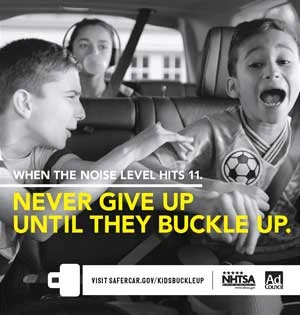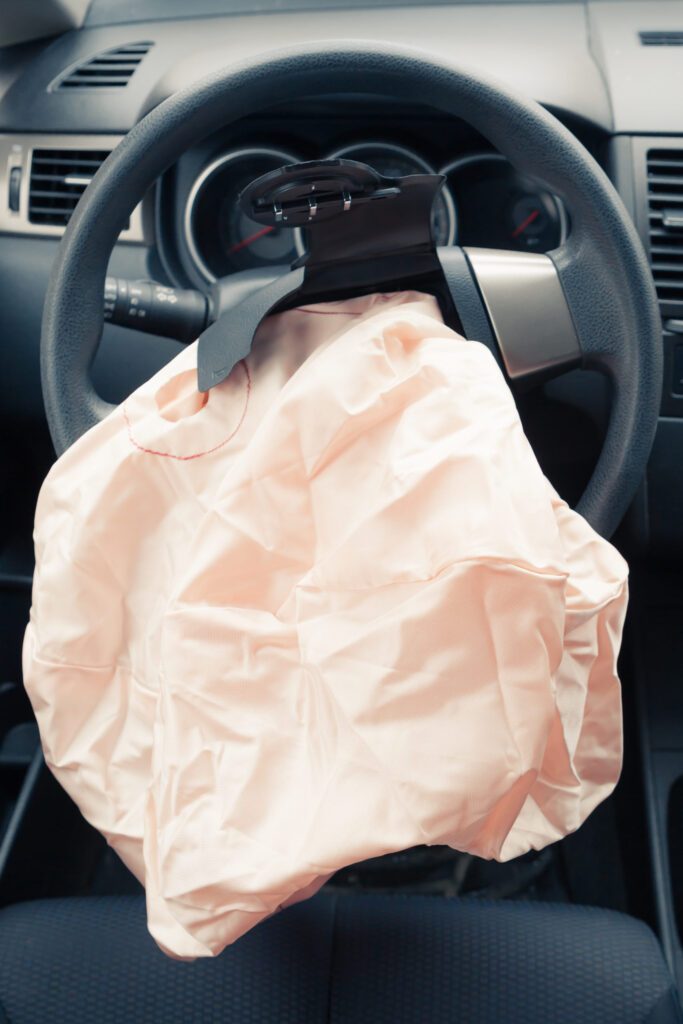
There are countless campaigns to promote seat belt usage to drivers beginning at the age they begin driving. On the opposite spectrum, child safety seat promotional messages are plentiful in the news today. Unfortunately, there is an age group between these two spectrums, that of 8 to 14 year olds, also known as “tweens”. This 8-14 year old age group is a time that adolescents test limits and learn habits. It is our goal to make buckling up and using seat belts a habit for tweens so that by the time they begin driving, it will be second nature to wear their seatbelts.
This week, the U.S. Department of Transportation’s National Highway Traffic Safety Administration announced a tween seat belt safety campaign. This is the first movement of its kind, aiming to increase not only the overall consistency of tweens wearing a seatbelt, but to educate on the proper use of seat belts as well. The key message targeting parents and caregivers with this campaign is that there should be zero negotiation when it comes to seat belt usage and to “never give up until they buckle up”.
Over the last five years, 1,552 kids between the ages of 8 and 14 years old have lost their lives in motor vehicle crashes. Almost half of those, 686, were not wearing their seat belts. For this reason, the NHTSA is focusing on this age group, both the tweens themselves and their guardians, to make sure that the vehicle doesn’t move until you hear the “click” of the seatbelt. And parents should not only require their children to adhere to the proper safety restraint system, but should lead by example. When a child, especially during these tween years, witnesses a parent cutting corners and not wearing their seat belt consistently, they begin to think it is ok for them to do the same. Parents, it is your responsibility to keep your children safe by teaching seat belt safety consistently from a young age.
The Top Five Challenges Reported To Getting Tweens To Buckle Up And Stay Buckled Are:
- Drivers not adhering to the same seat belt usage procedures.
- Distraction by electronics, eating, or some other activity while getting into the vehicle can cause good habits, like buckling up, to be forgotten.
- Discomfort is an excuse that many tweens may use, claiming that the seatbelt is uncomfortable. It is possible that the child has been prematurely moved to a seat belt from a booster seat, in which case parents should ensure that they are fitted in their seatbelt properly. Age has nothing to do with booster seat usage, and if your child is too small for a seatbelt you should require the use of a booster seat.
- Short Trips/Slow Speeds often lead children to believe that the safety concerns are not as great, and therefore feel that seatbelts are unnecessary. This is not true, as a majority of fatal accidents occur at speeds of 40 MPH or less and within 25 miles of one’s home.
- Nighttime often leads to adults not being able to see whether their child is buckled as well. Always double check, especially on long trips during which the child sleeps, as they may unbuckle their seat belts or put them behind their backs to become more comfortable.
Regardless of the excuse given by a tween to not buckle up, safety comes first. It is our goal that by the time a tween begins driving, seat belt usage will be automatic. As a Marietta auto accident law firm, we see victims of auto accidents whose lives were saved by seatbelts often. For more information about seat belt safety, visit www.nhtsa.gov.
Categories: Airbag Safety, Auto Accidents, Car Accident, Catastrophic Injuries, Distracted Driving, Georgia Laws, Personal Injury, Seatbelt Safety, Wrongful Death



